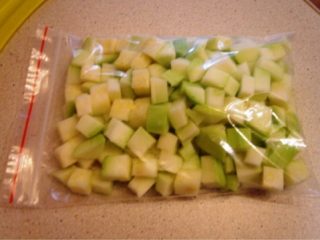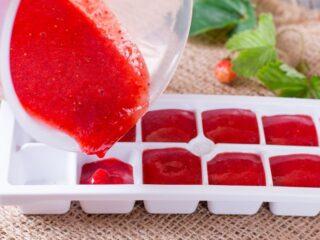Content
Freezing sauerkraut is one way to preserve it for as long as possible. Most of its properties remain unchanged. It is important to freeze the product correctly and comply with storage conditions and periods.
Is it possible to store sauerkraut in the freezer?
Sauerkraut is suitable for freezing. At the same time, many of its properties are preserved, although some qualities change. Freezing the product is recommended when it is planned to be used for heat treatment.
Advantages and disadvantages
Freezing pickled vegetables is easy. Many people who actively use it in cooking find this method very convenient.
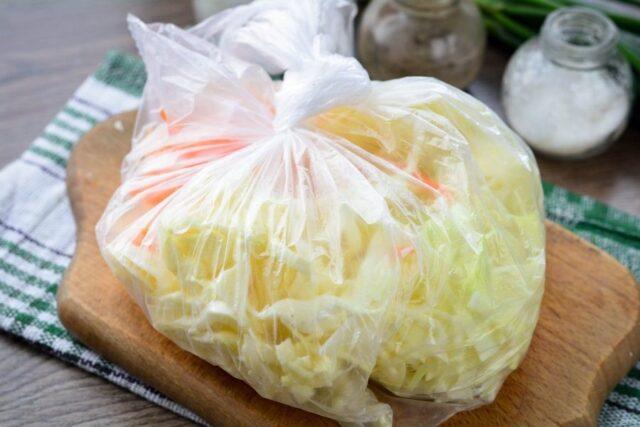
Proper packaging of sauerkraut for freezing saves a lot of space
Pros:
- increasing shelf life;
- consistency of taste;
- preservation of most useful elements, KBZHU;
- simplicity and speed of use of the finished product.
Minuses:
- loss of hardness, crunch;
- deterioration in appearance;
- less free space in the freezer;
- decrease in vitamin C content.
Some disadvantages of freezing food are relative.Firmness and crunch are important when eaten fresh, but their loss is not important when cooked. This also applies to appearance.
Properties of frozen sauerkraut
The product retains its nutritional value. After defrosting for another 2-3 hours it remains at the same level, but then begins to decrease. This factor does not matter if the workpiece is immediately consumed as food or subjected to heat treatment.
Freezing leads to a decrease in the concentration of vitamin C. However, the content of other acids and other valuable elements remains unchanged.
Sauerkraut does not lose its crunch immediately. After defrosting the product, it will keep for another 2-3 hours.
How to freeze correctly
It is best to freeze sauerkraut in the appropriate compartment of the refrigerator or in a separate chest or cabinet. Bags are usually used to package raw materials. The packaging is chosen to be dense; it is best to take the material specifically for freezing. An alternative option is plastic jars and containers.
It's easy to freeze the product:
- Squeeze the cabbage mixture to remove the liquid.
- Place the raw materials in bags or containers.
- Seal the package hermetically.
- Freeze filled bags.
It is better to start the process from the blast freezing department, if there is one. The filled bags are laid out in one layer. When the contents are completely frozen, you can put them tightly in one place. If packages are used, it is more convenient to combine them. One option is to put the blanks in a container.
There is no need to get rid of the brine when freezing. It is recommended to pour it into a bottle and store it in the refrigerator.Then this brine can be poured over the defrosted mass. This better preserves the taste and benefits.
Freezing can be organized in two stages. First, the cabbage is laid out on a board or flat surface. After freezing in this form, the raw materials are packaged and removed for permanent storage.
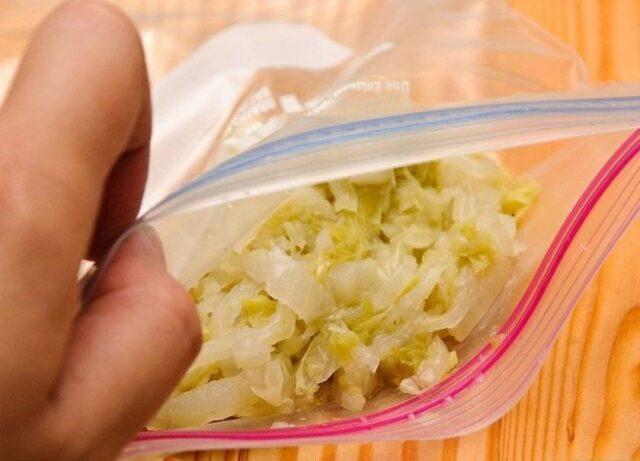
It is convenient to use zip-lock bags for freezing various raw materials
Terms and conditions of storage
Typically, freezer compartments in refrigerators maintain temperatures between -6 and 24 °C. For storing sauerkraut, it is optimal to set it to -18 °C. A larger indicator is needed only at the beginning for shock freezing.
Temperature changes should not be allowed. If there is a short-term power outage, then there is nothing to worry about. The refrigerator works like a thermos, maintaining the temperature for hours if you do not open it.
When frozen, sauerkraut can be stored for up to eight months. For maximum life, it is important to eliminate temperature changes and use freshly prepared and high-quality raw materials.
Defrosting and application
You need to defrost sauerkraut if you plan to use it fresh. In this case, take out a portion only for one time. There is no need to prepare anything in advance. This portion is placed in a suitable container and placed in the refrigerator for several hours. You can put it there overnight.
If heat treatment is intended, then the workpiece does not need to be defrosted. It is immediately added to the rest of the ingredients at the right time.
Frozen sauerkraut can be used in preparing various dishes:
- cabbage soup, cabbage soup, solyanka and other soups;
- stews and other vegetable dishes;
- bakery;
- cutlets;
- lazy cabbage rolls;
- casseroles;
- bigos and other main courses with meat.
Other ways to store sauerkraut
Instead of a freezer, the workpiece can be stored on the balcony. The disadvantage of this method is the temperature difference. During a thaw, the product may completely defrost.
There are other options:
- cellar - recommended temperature 0-5 °C, shelf life up to 4-5 months;
- refrigerator - in an airtight container the product will last up to three months, after opening 1.5 weeks;
- room conditions are an option for short-term storage, for a maximum of three days.
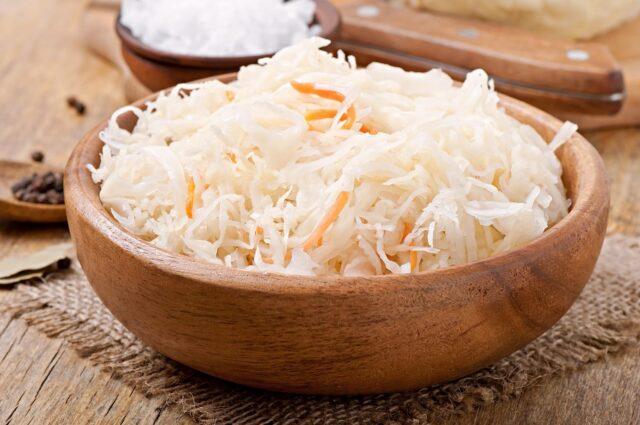
When choosing methods for preserving workpieces, it is important to consider that fermentation starts again at a temperature of 10 °C
Conclusion
You can freeze sauerkraut, in which case its shelf life increases to eight months. The main disadvantages of the method are loss of hardness (crunch) and reduction in ascorbic acid content. Storing the workpiece in the freezer is optimal when it is planned to be heat treated.
